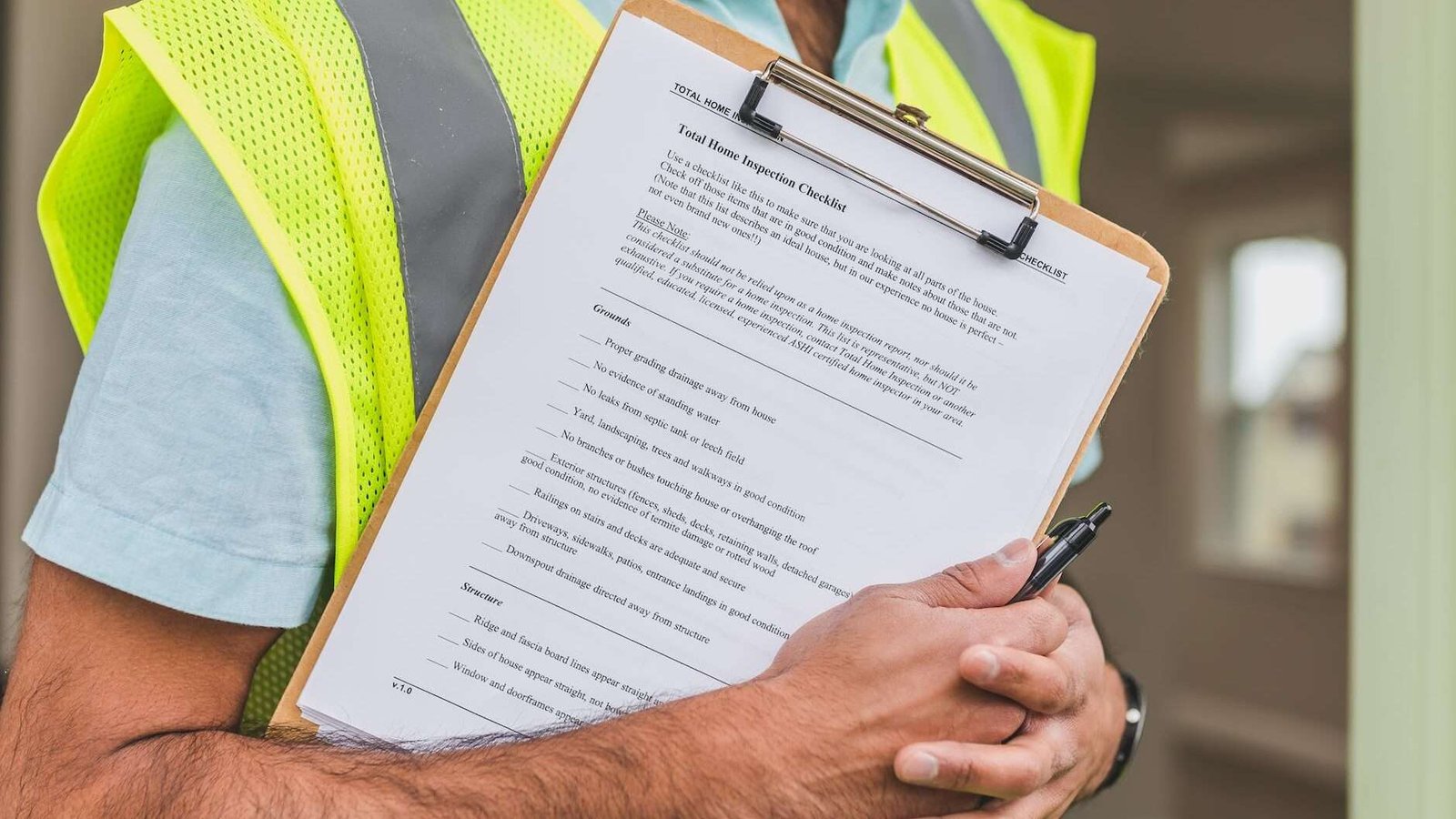Have you ever wondered what a safety officer actually does day to day? Their role is crucial for preventing accidents and ensuring a safe work environment, but the specifics of the job can seem a bit mysterious. As a safety officer, your core responsibility is to make sure all workplace activities adhere to occupational health and safety standards. That means evaluating potential hazards, conducting routine inspections, providing safety training to staff, and maintaining detailed records. It’s not the flashiest job, but you get to go home each day knowing you’ve helped keep people safe and avoided preventable disasters. If making a difference through diligence and risk management appeals to you, a career as a safety officer could be very rewarding. Let’s take a closer look at what the role entails.
Understanding the Role of a Safety Officer
As a safety officer, your primary role is to promote workplace safety and health. This means:
Identifying hazards
You’ll conduct routine inspections to spot potential hazards like faulty equipment, poor lighting, cluttered workspaces, etc. Once identified, you determine appropriate corrective actions to eliminate or control the risks.
Implementing safety policies and programs
You’ll establish and enforce policies to govern workplace safety, occupational health, emergency preparedness, and environmental protection. This includes developing training programs to educate employees on safe work practices.
Investigating incidents
When accidents or near misses happen, you investigate to determine the root cause(s) and corrective actions to prevent recurrence. You’ll interview witnesses, review procedures, and analyze relevant data to understand what went wrong and how to fix it.
Monitoring compliance
You track key metrics like lost time due to injuries, accident frequency rates, and policy violations to gage the effectiveness of the safety management system. By analyzing trends, you can make improvements to strengthen compliance and foster a culture of safety first.
Providing recommendations
You advise management on safety matters and recommend solutions to address problem areas. This could involve proposing updates to equipment, workspaces, policies, training, or processes to boost workplace safety. You help implement approved recommendations to support continuous improvement.
Serving as a safety resource
You are the go-to person for safety-related questions and concerns. Employees can come to you for guidance on proper safety equipment, safe work methods, policy interpretations, and more. You provide advice and recommendations to resolve issues.
In summary, safety officers play an integral role in protecting people, property, and the environment. By focusing on prevention over reaction, you help create a safe, healthy and productive workplace for all.
Main Responsibilities of a Safety Officer

As a safety officer, you have some major responsibilities to handle. Your top priority is ensuring a safe work environment for all employees.
Conducting Safety Inspections
You’ll regularly inspect facilities and work areas to identify any potential hazards or unsafe conditions. Things like faulty equipment, toxic chemicals, fire hazards, or anything else that could put workers at risk. Once identified, it’s your job to report these issues to the relevant parties and follow up to make sure corrections are made.
Investigating Accidents and Incidents
When accidents, injuries, or close calls happen, you’ll investigate to determine the root cause. Your findings and recommendations can help prevent similar events from happening again in the future. You’ll interview any witnesses, review procedures, check equipment, and analyze the overall situation to get to the bottom of what went wrong.
Providing Safety Training
You’ll develop and implement training programs to educate employees about workplace safety, emergency response procedures, and health hazards they may encounter on the job. Whether it’s new hire orientation or ongoing refresher courses, your training helps ensure everyone follows proper safety protocols.
Keeping Records
As a safety officer, you’ll maintain detailed records of inspections, accidents, training, and more. Accurate record-keeping provides an overview of the current safety program and a history that can be reviewed to spot any trends. Records may also be required to remain in compliance with health and safety regulations.
Continually Improving the Safety Program
The job of a safety officer is never done. You must consistently evaluate the current safety program and look for ways to strengthen it. Review policies, procedures, training, and equipment and make upgrades wherever needed to build a robust safety culture and reduce risks. Your efforts help create a safe, productive, and legally compliant work environment.
Conducting Safety Inspections and Assessments

As a safety officer, conducting regular inspections and assessments is one of your key responsibilities. These routine checks help identify any existing or potential hazards before they become bigger issues.
Inspections
You should perform periodic walkthroughs of all work areas, equipment, and processes. Look for things like:
- Trip hazards like uneven floors or exposed wires
- Faulty equipment that could malfunction
- Improper use or storage of hazardous chemicals
- Employees not following proper safety procedures
When you spot any problems, document them and determine corrective actions. Then, follow up to ensure the issues have been properly addressed.
Risk Assessments
It’s also important to evaluate various risks in the workplace that could endanger employees or disrupt operations. Analyze things such as:
- The likelihood of a hazard occurring
- Possible consequences and severity if an incident were to happen
- Current controls in place to mitigate risks
- Additional controls that may be needed
Conduct assessments for tasks, equipment, chemicals, and work environments. The results will help you develop effective safety policies and training programs.
Additional Duties
Other inspection and assessment duties may include:
- Testing emergency equipment like fire alarms, sprinklers, and eyewash stations
- Checking that safety showers, exits, and evacuation routes are clearly marked and unobstructed
- Ensuring first aid kits and supplies are fully stocked and up to date
- Surveying for proper use of personal protective equipment
- Reviewing accident and near-miss reports to determine their root causes
Staying on top of these safety checks and evaluations is paramount to protecting your company’s most valuable assets—its employees. By frequently inspecting and assessing for risks, you can help prevent injuries, incidents, and catastrophes before they have a chance to happen.
Training Employees on Safety Procedures and Compliance

As a safety officer, one of your most important responsibilities is training employees on safety procedures and ensuring compliance. You need to:
Educate Employees on Safety Policies
Make sure all employees understand the company’s safety policies and procedures. Review the safety manual with new hires and conduct regular refreshers for current employees. Explain safety precautions, emergency plans, proper use of equipment, hazard reporting, and accident response procedures.
Provide Safety Training
Develop and implement training programs based on the specific hazards of different jobs and work areas. This could include courses on confined space safety, fall protection, hazardous waste handling, emergency response, and more. Provide both classroom instruction as well as on-the-job training.
Monitor Compliance and Address Issues
Observe employees at work to ensure they are properly following all safety rules and procedures. Provide verbal warnings, retraining, or disciplinary action as needed for those not in compliance. Look for shortcuts or improper use of equipment and correct these unsafe work habits and behaviors immediately.
Promote a Safety Culture
Work to build a culture of safety through leading by example, open communication, incentives, and accountability. Praise employees who follow proper safety practices. Share lessons learned from incidents and near misses. Encourage employees to report hazards and make safety suggestions. Foster cooperation between management and employees on safety initiatives.
Continuously evaluating safety procedures, providing up-to-date training, ensuring compliance, and promoting a strong safety culture are all key parts of a safety officer’s role. By focusing on education and building good safety habits, you can significantly reduce the risk of accidents and injuries in the workplace.
Record Keeping and Reporting on Safety Performance

As a safety officer, keeping accurate records and documenting safety performance is an important part of your role. Reporting on key metrics and trends helps identify areas for improvement and ensures compliance.
Accident and Injury Logs
Maintaining records of any workplace accidents, injuries, or near misses is critical. Documenting these incidents helps determine the cause and prevent future occurrences. Be sure to log details like date, time, location, people involved, and a description of what happened. Analyze logs regularly to spot patterns and make changes.
Safety Inspections
Conducting routine safety inspections of equipment, machinery, workspaces, and procedures is key to a safe work environment. Document any hazards or risks identified during inspections, along with plans for correction. Share inspection results with relevant parties to increase awareness. Regular inspections, along with prompt action on identified issues, help avoid dangerous situations before they arise.
Training Records
As safety trainings are conducted, be sure to keep records of attendees, topics covered, and key takeaways or action items. Well-trained employees are essential to workplace safety. Review training records periodically to ensure all required and recommended trainings have been provided, and that any identified knowledge gaps are addressed.
Key Performance Indicators
Tracking key performance indicators (KPIs) related to safety provides an overview of how your organization is trending over time. Relevant KPIs may include number of recordable injuries, lost time incident rate, workers compensation costs, number of reported near misses, and results of safety audits or inspections. Analyze KPIs regularly and report trends to leadership to support continual improvement.
Comprehensive record keeping and reporting is time consuming, but provides valuable insights into the overall health and safety of your organization. Be diligent in your documentation and analysis to help build a workplace environment where people feel secure, valued and able to thrive.
Conclusion
At the end of the day, the key roles and responsibilities of a safety officer boil down to protecting workers and creating a safe workplace environment. But to be truly effective in this position, you need to be proactive, not reactive. Stay up to date with the latest health and safety regulations. Provide regular training to keep workers aware of hazards and emergency procedures. Conduct routine inspections and audits to identify issues before they become problems. Work closely with management and employees to foster an organizational culture where safety is a top priority. The job of a safety officer is demanding, but also rewarding. When done well, you get to see the difference you make in people’s lives every single day. So keep your head on a swivel, lead by example, and make safety your mission. The wellbeing of all those workers is in your hands.













